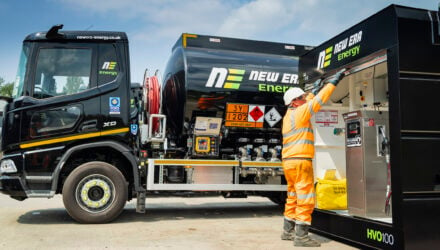At a time when skilled drivers are in high demand, fleet managers are increasingly focused on improving safety standards and caring for their employees’ health and wellbeing. While there are many ways to approach this, next-generation telematics systems have become a useful tool in their armoury.
Telematics systems have long been used to monitor driver behaviour, manage compliance and improve operational efficiency by streamlining routes and increasing vehicle mpg rates. Now growing use of onboard sensors and camera technology is opening up new opportunities to promote driver health and wellbeing.
Driver fatigue and poor mental health are well-known problems across the fleet industry. Shift working, combined with a sedentary lifestyle, can result in a lack of sleep and cause lifestyle-related health issues such as stress, diabetes and obesity.
Telematics and connected vehicle technologies can help fleet managers to tackle these problems by increasing driver awareness of the importance of health and wellbeing, whilst alleviating some of the pressure on drivers. For example, real-time information about road and weather conditions can be used to optimise routing information, which is sent to drivers before they start out. Such tech-enabled job management systems can help to reduce pressure on drivers by giving them greater control over their delivery schedules and empowering them to make routing decisions based on accurate, real-time information. The most sophisticated technologies can also pinpoint addresses precisely, so deliveries can be made as efficiently as possible.
The use of ADAS camera systems can help to increase driver awareness of situations that could increase the risk of at-fault accidents, if they are in danger of falling asleep for example. As well as allowing drivers to take preventative action for themselves by taking a break or getting more rest in between shifts, this type of information can be incredibly valuable to business managers when used constructively as part of a driver management and training programme.
A recent pilot scheme involving the use of Garmin wearable devices is promising to take driver health and wellbeing to a new level. With the consent of individual drivers, the wearable technology monitors drivers’ health and wellbeing, based on biometric markers such as their blood pressure and pulse, and detects how much sleep or exercise they have had. Access to this information means drivers and their employers are fully informed about their health and wellbeing prior to and during each shift.
Most commercial fleet drivers understand the importance of sensors and tracking technologies and their role in improving safety and reducing the risk of at-fault accidents. However, until now, relatively few have had an opportunity to use such technologies to monitor their own health and wellbeing,
Whilst many drivers will welcome the use of wearable devices and ADAS camera systems, others may have concerns. To address this, managers should communicate the benefits these technologies will bring as clearly as possible at the outset. Designed to increase awareness levels, the data provided by these technologies gives drivers greater control over their own health and wellbeing, whilst protecting their safety.
Prior to their introduction, a practical workshop should be organised to familiarise drivers with the technologies. Each device or piece of equipment should be explained in detail – how it works and how it is being used to protect drivers’ health and wellbeing. Regular follow-up workshops should be organised to remind drivers of best practice and increase awareness further.
Forward-thinking fleet managers can design their own package of connected vehicle technologies according to the business’ objectives. The use of sophisticated job management systems, wearable devices and ADAS camera systems, as part of a fully-integrated telematics solution, can have a positive impact on drivers’ health and wellbeing at the same time as improving the fleet’s safety performance over time.
Author: Helena Ferraro, Group Marketing Manager at Connexas Group.







